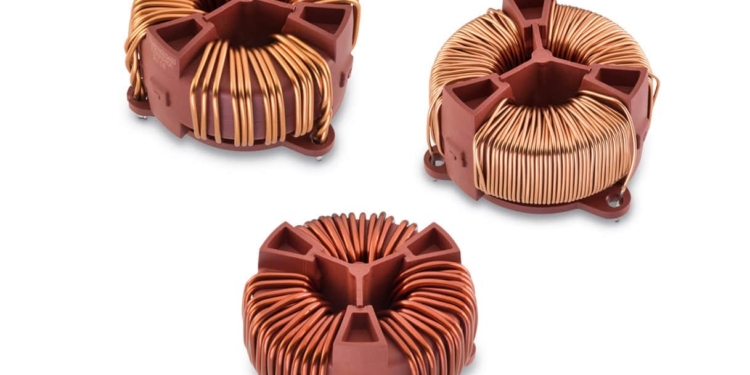source: Würth Elektronik news
Waldenburg (Germany), 25 January 2017 – Würth Elektronik eiSos, Europe’s leading supplier of electronic and electromechanical components, is proud to present its WE-TPB HV series of current-compensated, three-phase, power line chokes for high-voltage applications.
This new series guarantees a rated voltage up to 760 VAC, which is 70% more than that offered by comparable products already available on the market. This new series was made possible by an innovative, patented design using a novel plastic casing, separating strip, and grid plate.
The toroids used can be made both of MnZn ferrite material as well as of nanocrystalline material; thus, making it possible to achieve very high inser-tion losses even in broadband applications. All insulation materials used in these products are UL94-V0 listed. As a measure to enhance the stability on the PCB, the chokes can also be fixed in place with a tapping screw.
Typical applications for this series include frequency inverters and high-performance charging stations.
Free samples of the new power line chokes are available on request; the products of this new series are directly avai¬lable from stock.






























